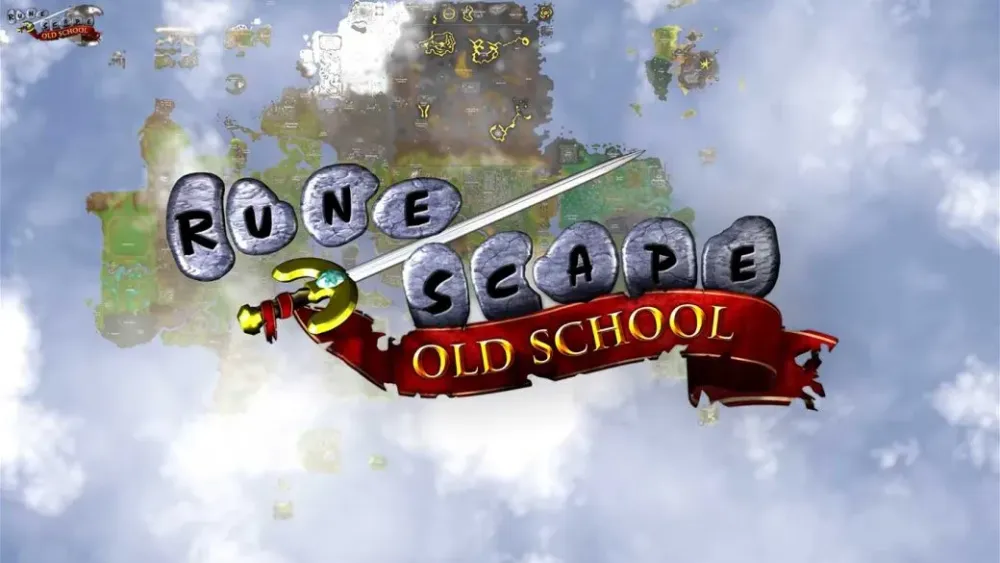Your cart is empty
When Was Old School RuneScape Released A Historical Dive

Old School RuneScape (OSRS), a beloved MMORPG, holds a special place in the hearts of gamers worldwide. Known for its nostalgic gameplay and community-driven updates, OSRS has thrived for over a decade. But when exactly was Old School RuneScape released, and what led to its creation? This blog post explores the release date, historical context, and evolution of OSRS, answering key questions for fans and newcomers alike.
Old School RuneScape was officially released on February 22, 2013. This date marked the launch of a game that started as a nostalgic revival of RuneScape’s August 2007 version, following a community poll that showed overwhelming support for its return. Developed and published by Jagex, OSRS quickly gained traction, hitting 50,000 online players within just four hours of launch.
Why February 22, 2013?
The release date wasn’t arbitrary. Jagex announced the possibility of reviving the 2007 version of RuneScape on February 13, 2013, after discovering a backup of the game’s source code from August 10, 2007. A community poll ran from February 15 to March 1, 2013, to gauge interest. With 449,351 votes, the poll didn’t quite reach the 500,000 needed for no additional membership fee, but Jagex launched OSRS anyway, initially requiring a subscription.
Early Access and Initial Reception
Despite plans for a one- to two-month preparation period, Jagex opened over 50 OSRS servers on February 22, 2013, as part of an early access scheme. Voters received a free month of membership, and the game saw player counts rivaling the modern RuneScape. The nostalgic loading screen and familiar gameplay sparked excitement, with players sharing memories of logging in on launch day.
The Context Behind OSRS’s Creation
OSRS didn’t emerge in a vacuum. Its release was a response to player dissatisfaction with RuneScape’s evolution, particularly the transition to RuneScape 3. Understanding this context helps explain why OSRS became a cultural phenomenon.
RuneScape’s Evolution and Player Backlash
RuneScape began in January 2001 as a browser-based game, evolving into RuneScape 2 in 2004 and RuneScape 3 in July 2013. The latter introduced the Evolution of Combat (EoC), which overhauled the game’s mechanics, alienating many players who preferred the simpler, point-and-click combat of the 2007 version. This backlash prompted Jagex to consider reviving the older game.
The Role of the Community Poll
Jagex’s CEO, Mark Gerhard, announced the poll in February 2013, offering players a chance to vote for a 2007-based server. The poll had tiered vote thresholds, with features like no additional membership fee requiring 750,000 votes. Although it fell short, Jagex incorporated key incentives, such as community-voted updates, making OSRS a unique, player-driven game.
Key Milestones After OSRS’s Release
Since its launch, OSRS has evolved far beyond its 2007 roots, with new content and features approved through player polls. Here are some pivotal moments in its history:
- February 2015: Permanent free-to-play (F2P) access was introduced after a poll, alongside membership bonds, making the game more accessible.
- October 2015: Deadman Mode, a high-stakes PvP mode, launched, offering accelerated experience rates and unique challenges.
- January 2016: The continent of Zeah was added, introducing new quests, bosses, and lore.
- October 2018: OSRS mobile launched for iOS and Android, enabling cross-platform play and boosting accessibility.
- December 2024: OSRS hit a record 231,719 concurrent players, cementing its status as the more popular RuneScape version.
OSRS vs. RuneScape A Comparison
To understand OSRS’s appeal, it’s helpful to compare it to RuneScape 3. The following table highlights key differences:
| Feature | Old School RuneScape | RuneScape 3 |
|---|---|---|
| Release Date | February 22, 2013 | July 2013 |
| Base Version | August 2007 | Modern updates |
| Combat System | Point-and-click, no abilities | Evolution of Combat with ability bars |
| Graphics | Low-poly, retro | Modern, 3D |
| Content Updates | 70%+ player vote approval | Developer-driven |
OSRS’s retro charm and community-driven model have made it the preferred choice for many, with over 300 million accounts created across both games since 2001.
Why OSRS Outshines RuneScape 3
OSRS’s simplicity, lack of microtransactions in core gameplay, and player control over updates resonate with fans. Features like the Grand Exchange (reintroduced in 2015) and exclusive content, such as the Chambers of Xeric, keep the game fresh while preserving its nostalgic core.
The Legacy and Future of OSRS
As of April 15, 2025, OSRS remains a titan in the MMORPG genre, with a vibrant community and regular updates. Its mobile release, cross-platform play, and innovative modes like Leagues and Group Ironman have kept it relevant. The upcoming Sailing skill, approved by players, promises to redefine the game further.
Community-Driven Success
OSRS’s polling system, requiring 70% approval for updates, ensures the game evolves with player input. Over 2,800 polls have shaped the game since 2013, from new quests like Song of the Elves to quality-of-life features like the wiki search button. This model has fostered a loyal community, with players celebrating milestones like the 11th anniversary in 2024.
What’s Next for OSRS?
The future looks bright, with Jagex teasing expansions and new content. The Sailing skill, set to be the first new skill in OSRS, reflects the game’s ability to innovate while staying true to its roots. With a peak player count of 231,719 in December 2024, OSRS shows no signs of slowing down, continuing to attract both veterans and newcomers.
In conclusion, Old School RuneScape’s release on February 22, 2013, was a pivotal moment in gaming history, driven by community passion and Jagex’s responsiveness. From its humble beginnings as a 2007 backup to a global phenomenon, OSRS exemplifies the power of nostalgia and player agency. Whether you’re a seasoned adventurer or a curious newbie, Gielinor awaits.
